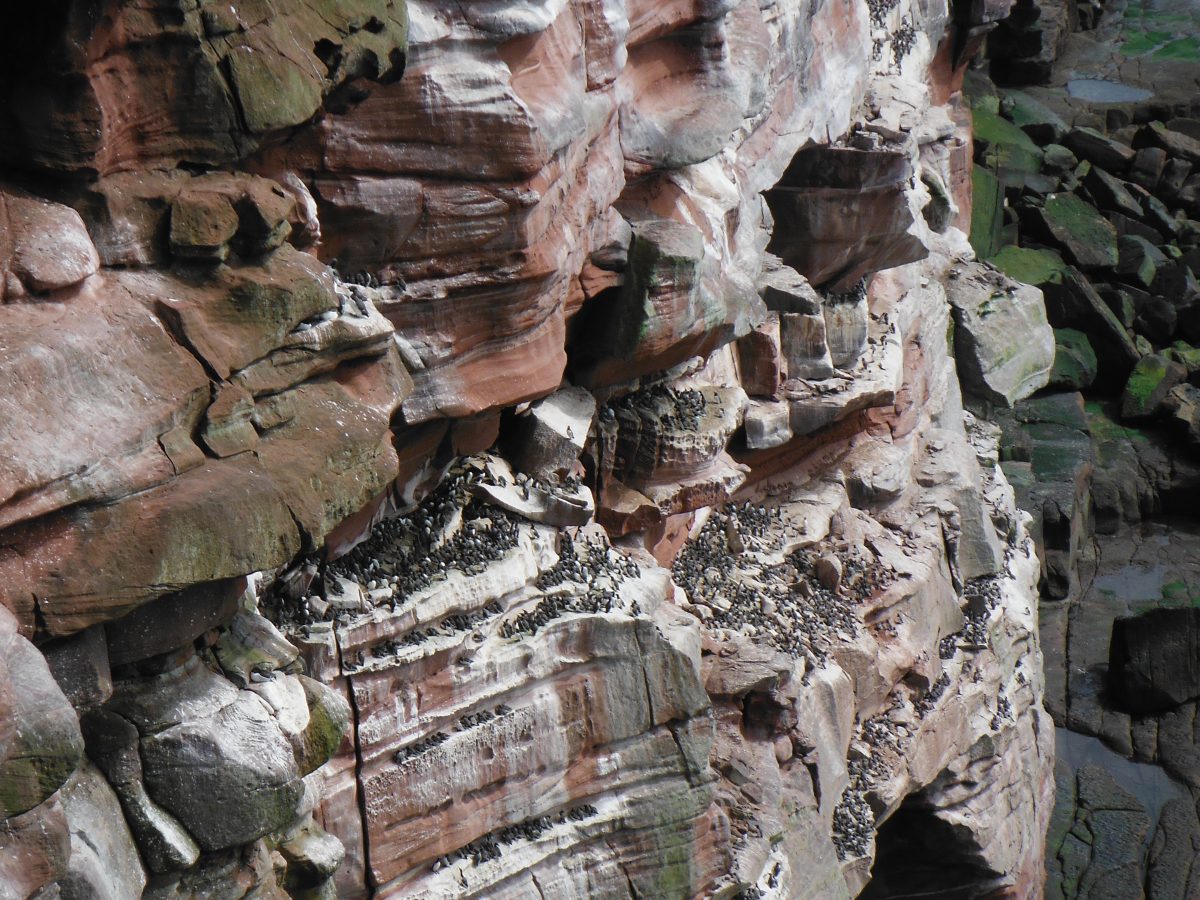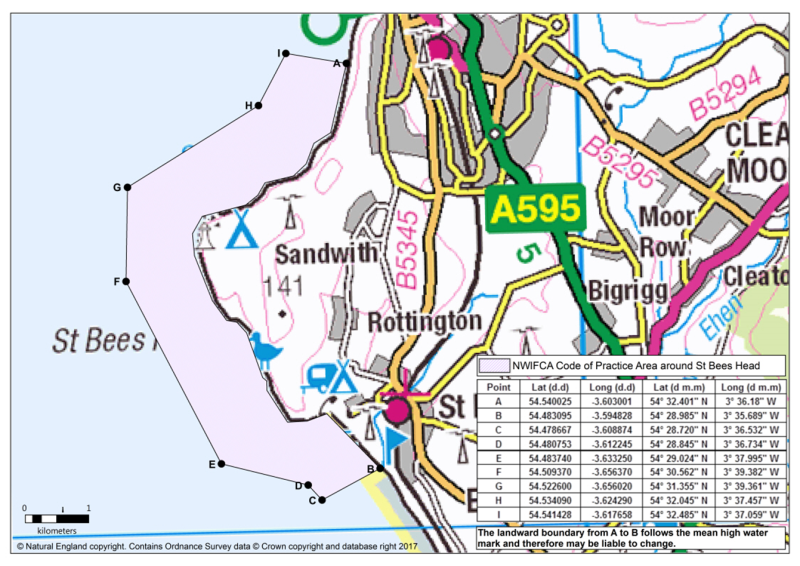
North Western Inshore Fisheries and Conservation Authority (NWIFCA) is calling for fishermen and women to follow a Voluntary Ban on placing nets around St Bees starting 1st March 2018.
Although thankfully not a common occurrence, there have been distressing reports in the past of numbers of birds getting caught up in the nets and drowning. Obviously no one wants or intends this, and fishers themselves have been deeply upset when it has occurred.
As fisheries regulators the NWIFCA has a duty to ensure that netting is not having a damaging effect on birds. The breeding season is the crucial time for seabirds such as razorbills and guillemots nesting on the cliffs at St Bees. Following meetings with fishers, Natural England and the RSPB the NWIFCA Technical Science and Byelaws Sub-committee (TSB) agreed the introduction of a Voluntary Code of Practice to be brought in in 2018. A copy of the report is available here.
St Bees is an important cliff habitat for breeding seabirds, and is designated as a Site of Special Scientific Interest (SSSI). It also lies within the Cumbria Coast Marine Conservation Zone (MCZ). Many of the bird species are diving birds which have the potential to become entangled in nets when searching for their food.
Under the Code of Practice all netting activity, whether from the shore or from licensed or unlicensed fishing vessels, is banned during the period 1st March to 15th July (provisional date) in an area from the mean high water mark extending out to around 1km. The date the ban will be removed is provisionally set as 15th July, but will be finalised during the season and will depend on advice from Natural England on the behaviour of the birds and timing of their breeding and fledging which will be weather dependent.
NWIFCA Officers will monitor the effectiveness of this Voluntary Code of Practice to inform the Authority of whether more stringent management is required.
Fishing Around St. Bees Headland
Voluntary Code of Practice

To reduce the risk of bird entanglement in fishing nets the NWIFCA recommends that the following Code of Practice should be followed:
- No netting of any type in the area highlighted in the map below during the period 1st March to 15th July**.
- If you do accidentally catch a bird in your net outside of the area or in any non-netting gear within the area ensure that you contact the NWIFCA on the details above with details of the capture including location, number of birds and species.
The sea around St. Bees Head is important for many species of birds which nest on the cliffs and feed on fish in the area. Some of the birds are susceptible to becoming accidentally entrapped by nets and disturbed by vessel movement. At particular times of year (around the breeding season) these birds are at especially high risk. Nobody wants to see birds caught in fishing gear, including those fishing the gear. Apart from the obvious damage to those individual birds, it can cause distress to the public and lead to a damaging perception of fishing.
Note: St Bees Head is a Site of Special Scientific Interest (SSSI) notified under Section 28 of the Wildlife and Countryside Act 1981, and an RSPB Reserve.
| ** NB. These dates to be reviewed annually. The restricted period may be started earlier or extended depending on weather, the behaviour of the birds, and assessment by Natural England and the RSPB of the risk of netting to the birds, particularly juvenile birds. |